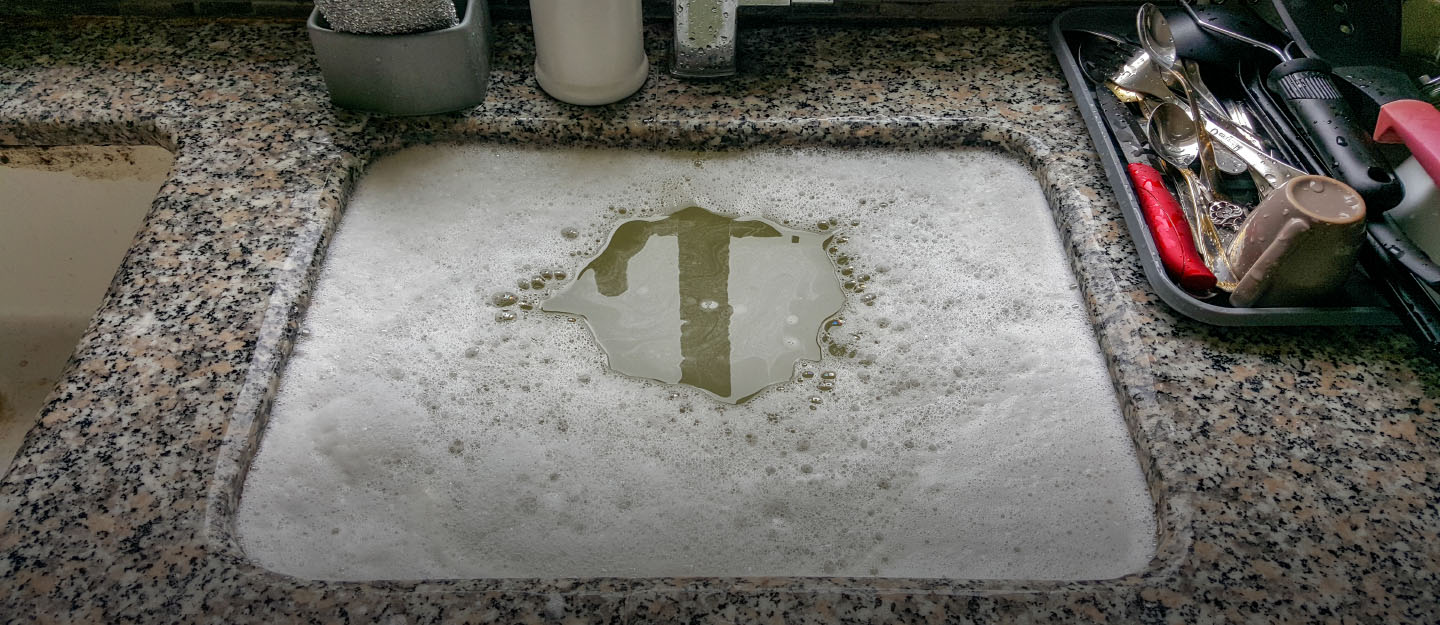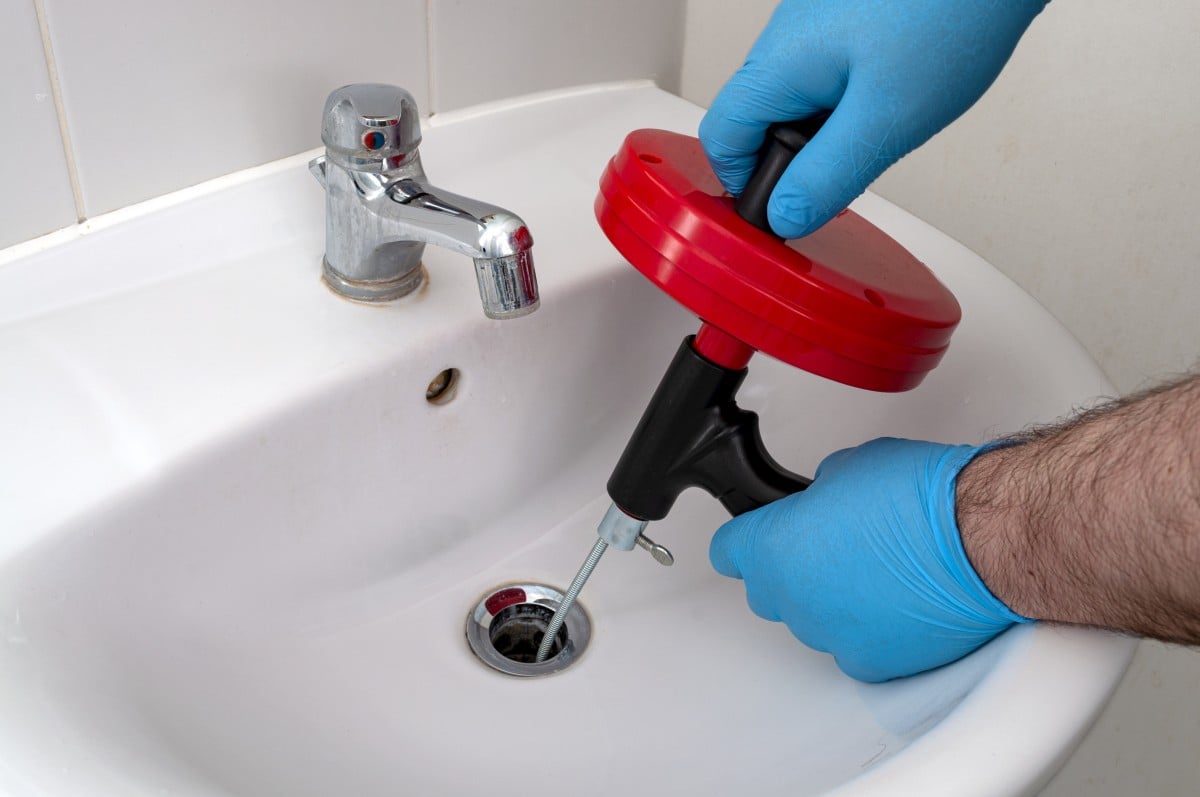Stuck Water Woes - 6 Root Causes Of Kitchen Sink Drainage Issues
Stuck Water Woes - 6 Root Causes Of Kitchen Sink Drainage Issues
Blog Article
The content following next relating to Five Ways to Fix a Slow Sink Drain is particularly insightful. Give it a try and make your own final thoughts.

It's not normal for your cooking area sink to clog up numerous times in one month. If your sink blocks two times a week, there's some trouble going on.
An obstructed cooking area drain does not simply slow down your duties, it weakens your entire plumbing system, little by little. Below are some common practices that urge sink blockages, and also how to avoid them.
You require correct waste disposal
Recycling waste is wonderful, but do you take note of your natural waste also? Your kitchen ought to have 2 different waste boxes; one for recyclable plastics and another for organic waste, which can come to be garden compost.
Having a designated trash bag will certainly aid you and also your family avoid throwing pasta as well as various other food residues down the drain. Generally, these remnants take in dampness and also come to be clogs.
The fault isn't from your kitchen area sink whatsoever
Perhaps the trouble isn't from your cooking area sink, yet the entire drainage system. In such a case, you may discover that other sinks as well as drains pipes obtain blocked every other week. You require a specialist plumbing solution to repair this.
You're tossing coffee away
Made use of coffee premises and also coffee beans still soak up a substantial amount of moisture. They may appear little adequate to throw down the drainpipe, yet as time takes place they start to swell and also occupy even more room.
Your coffee premises must enter into organic waste disposal. Whatever fraction leaves (possibly while you're washing up) will be taken care of throughout your month-to-month cleaning.
You have actually been consuming a great deal of oily foods
Your cooking area sink might still get blocked even with organic garbage disposal. This might be due to the fact that you have a diet plan rich in greasy foods like cheeseburgers.
This grease layers the within pipes, making them narrower and even more clog-prone.
Make use of a bettor
Your pipe wasn't dealt with appropriately in the first place
If you've been doing none of the above, yet still get regular obstructions in your kitchen area sink, you ought to call a plumber. There could be an issue with how your pipelines were installed.
While your plumber gets here, look for any leakages or irregularities around your kitchen pipelines. Do not attempt to fix the pipelines yourself. This might trigger a crash or a kitchen area flood.
A person tried to clean their hair in the kitchen area sink
There's a correct time as well as place for whatever. The kitchen sink is simply not the best area to wash your hair. Cleaning your hair in the kitchen area sink will certainly make it block one way or another unless you utilize a drainpipe catcher.
While a drain catcher could catch a lot of the after effects, some hairs may still survive. If you have thick hair, this may suffice to slow down your drain and ultimately form a blockage.
There's even more dirt than your pipelines can handle
If you obtain fruits straight from a farm, you might notice even more cooking area dirt than other people that go shopping from a shopping mall. You can easily repair this by cleansing the fruits and veggies correctly before bringing them right into your house.You need appropriate garbage disposal
My Kitchen Sink Won’t Drain - What Should I Do?
If Your Sink Has a Garbage Disposal...
Turn on the disposal. If the disposal hums and doesn’t turn, then there’s clog in the disposal unit.
Go to your circuit breaker panel, and switch off the circuit breaker to your garbage disposal.
Back in your kitchen, double-check that your garbage disposal is off by trying to turn it on. The disposal should not move, and it should not make any noise.
Lie down underneath your sink so that you can see and access the bottom of the disposal unit. Look for a hole that looks like the head of a hex-head bolt in the center of the unit.
Place an Allen wrench inside this hole and turn it from side to side until you feel a decrease in resistance and are able to rotate the wrench completely in a single direction. This action rotates your disposal’s blade manually.
Put the wrench aside, and press the disposal unit’s reset button or switch.
Flip your garbage disposal’s circuit breaker switch back on, and turn on the unit to see if the obstruction has cleared. If it hasn’t, repeat the steps above until the obstruction is removed.
How to Unclog a Kitchen Sink Drain
If you have a double bowl sink, seal one side of the sink with an airtight lid or a second plunger before plunging the other side. Otherwise, you won’t be able to create adequate suction.
Place the cup of the plunger completely over the drain opening.
Turn on the faucet, and let the water run until it completely covers the cup of the plunger.
Start plunging by pushing the plunger down and pulling up again in order to build up suction. Make sure that the edges of the plunger stay in contact with your sink, or else you’ll lose the suction.
If you have trouble forming a seal between your sink and plunger, add petroleum jelly to the mouth of your plunger, and try again.
Plunge about five or six times before removing the plunger to see if water starts to drain properly. In some cases, you’ll even be able to feel the clog become dislodged while you plunge because suddenly there will be much less resistance. Repeat the plunging process until the clog clears.
Once water is draining properly again, run hot water down the drain for 5 minutes to help clear away grease, grime, and debris from the clog. https://www.plumbingjoint.com/blog/2019/august/my-kitchen-sink-won-t-drain-what-should-i-do-/

My Kitchen Sink Won’t Drain - What Should I Do?
If Your Sink Has a Garbage Disposal...
How to Unclog a Kitchen Sink Drain
https://www.plumbingjoint.com/blog/2019/august/my-kitchen-sink-won-t-drain-what-should-i-do-/
I found that content about Five Ways to Fix a Slow Sink Drain when looking around the internet. Please set aside a second to promote this blog post if you liked it. Thanks a lot for taking the time to read it.
Find Out More
Report this page